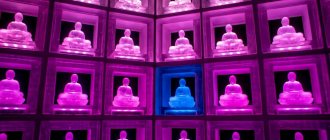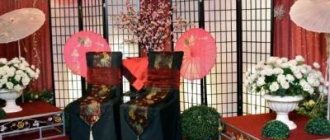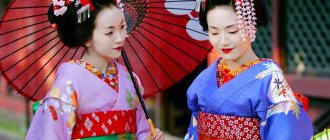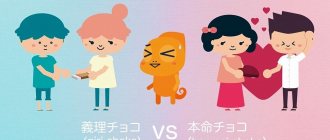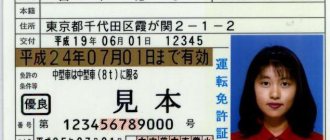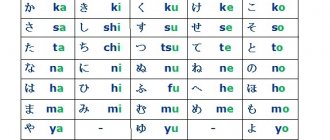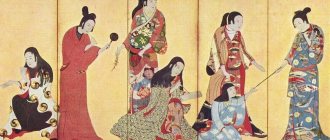New Year in Japan is one of the favorite holidays. After all, the holidays, which last from December 28 to January 4, stop almost all business life in the country. On these days, employees of any field of activity have a rest. This holiday is also called in a special way: O-shogatsu. Since the end of the nineteenth century, it has been celebrated according to the generally accepted Gregorian calendar, and before that time the celebration took place according to the lunar calendar. Japan, rich in traditions and customs, celebrates the New Year beautifully, brightly and tasty.
Preparation for the holiday
One of the most beautiful and brightest events in Asia is the New Year in Japan. Customs and traditions carry symbolic meaning in every detail.
The Japanese begin to prepare long before the holiday itself. The most striking event on the eve of the New Year is the numerous fairs where you can buy everything: from the necessary holiday paraphernalia to famous oriental souvenirs.
For example, the world famous arrows with white feathers, which are called Hamaimi. According to ancient legends, they reliably protect the house from evil spirits and troubles. Another popular talisman is the kumade or “bear paw”; it looks like a bamboo rake and, according to the Japanese, brings happiness to the owner.
Takarabune - a boat with rice or some other “treasures”. The seven gods of luck sit on it, and it is also an important talisman.
The eyeless Daruma wish doll is a popular New Year's gift. Its owner must make his most cherished wish and draw one pupil; if the wish is fulfilled, then the other eye is drawn, but if not, the doll is burned a year later in the traditional New Year's bonfire.
When making any purchase at the fair, the generous Japanese give everyone a figurine of an animal, which is a symbol of the coming year.
Fortune telling based on New Year's dreams
Dreams that come to people on the night of January 1 to 2 and from January 2 to 3 are called hatsuyume. There is a belief that they can be used to predict fate for the entire next year. Thus, symbols of good luck and prosperity are: Mount Fuji, falcon and eggplant.
What does this have to do with eggplant? Not everyone knows, but the Japanese love this vegetable. It is included in many dishes, and was previously considered a scarce delicacy.
Home decorations
New Year in Japan is distinguished by its traditions and customs. Instead of the usual Christmas tree with multi-colored balls, the homes of these people are decorated with the so-called kadomatsu, which means “pine tree at the entrance.” It is usually made from pine and bamboo, which are woven with rice straw rope. Kadomatsu is a traditional greeting to the Deity of the New Year festival. These products are decorated according to personal preferences, usually with fern branches, tangerines, bunches of seaweed or dried shrimp. Of course, every detail of the decoration carries a symbolic meaning.
The Japanese decorate their homes with bouquets of bamboo or willow branches, and hang mochi (dough products) in the form of flowers, fish or fruits on them. This decoration is called motibana, it is painted in yellow, green, and pink colors. Such products are an integral part of the traditional Japanese New Year, because, having seen this decoration, the deity of the holiday Toshigami begins his duties - taking care of the owners.
New Year's dishes: zoni and osechi-ryori
Decorating the Japanese New Year's table is a traditional Osechi treat. In accordance with the original plan, osechi-ryori is intended to free Japanese women, who work tirelessly all year, from the troubles of at least the first three days of the new year. Osechi is made using ingredients that, according to Japanese beliefs, bring happiness and good fortune. The treat should not spoil; it is a set of boiled and fried dishes and light marinades, beautifully arranged in lacquered “multi-story” boxes of three, four or five levels.
The traditional osechi set includes dishes that have a long history, dating back to ancient rituals of prayer for health, prosperity and a rich harvest.
Ready-made osechi sets can be ordered from restaurants, department stores and famous chefs starting in early October. And on December 31, New Year's Eve, supermarkets and shopping centers provide customers with the opportunity to “assemble” a set of osechi on their own, purchasing its component dishes separately. Sales of osechi sets have increased, partly due to the simplicity and convenience of the online ordering and purchasing system. In recent years, non-traditional sets have also appeared, which include dishes not from Japanese, but from European, Chinese and Korean cuisines. Due to the constant decline in the birth rate on the one hand, and the increase in life expectancy on the other, osechi sets designed for one or two people are becoming increasingly popular.
Osechi-ryori and New Year's alcoholic drink toso
Dzoni - New Year's soup with mochi rice cakes. Depending on the region, the ingredients can vary quite a lot: in some places they add miso paste to the soup, in others they use only broth without dressing, in others they cook the soup with chicken, fish and vegetables, and somewhere in the zoni it is customary to add sweet red beans. And even the mochi that goes into the soup comes in different types: in eastern Japan and the Tohoku region they are rectangular, and in western Japan they are round; sometimes they are fried before being added to the soup, sometimes not. If you decide to try zoni, keep in mind that every year in Japan there are a significant number of accidents associated with this dish: elderly people begin to choke, unable to swallow sticky mochi.
Nanakusa-gayu rice porridge
On the seventh of January, the holiday of jinjitsu (person's day), it is customary to eat nanakusa-gayu - rice porridge with the addition of “seven lucky imperial herbs”. It is believed that easily digestible nanakusa-gayu allows the digestive system, which is tired of the abundant feasts and libations of the first New Year's days, to rest. In the old days, there were almost no greens in the winter diet, and by eating these seven herbs, people received new strength from nature.
Starting on New Year's Eve, the series of traditional holidays lasts for several weeks. As has been the custom for a long time, during the holidays the Japanese ask the gods for health and happiness in the new year. However, while respecting the wisdom and experience of the people of old, we must not forget that sweet sake and rice cakes are very high-calorie foods, and it is not for nothing that in the Japanese language there is a special word shogatsu-butori, which denotes significant weight gain caused by New Year's gluttony. May the New Year bring you a lot of joy and not an ounce of excess weight!
Banner photo: Many worshipers attend the first Hatsumode prayer of the year at Asakusadera Shrine (©Jiji)
Bells chime
New Year in Japan comes with 108 bells ringing at midnight from Buddhist temples.
According to religion, a person has six vices: he can be greedy, greedy, evil, stupid, frivolous and indecisive. Each of them has eighteen shades. The sound of the bell frees the Japanese from one of these misfortunes.
The main thing in this ritual is that everyone can take part in such an important act. The bell is not rung by Buddhist priests, but by those lucky people who lined up early in the morning to make it in time. Each blow is carried out by groups of 8-12 people, so a thousand people have time to have a hand in the main festive action.
After the last blow, residents and visitors of Japan go to bed to wake up with the first rays of the sun and meet the first sunrise of the new year. It is generally accepted that it is at this time that the seven gods of happiness arrive on a ship.
history of the holiday
For many centuries, it was customary to celebrate the Japanese New Year at the beginning of spring; the date was floating and determined according to the lunar calendar. This order of things remained until 1873 , when the Meiji ; as a result of reforms, the date was moved to January 1 .
The celebration lasts from December 29 to January 4 , during this period business activity slows down, work at enterprises is suspended, and everyone is caught up in the festive bustle.
Meeting the first sunrise of the year
This unchanging ritual has been observed by the Japanese for several centuries in a row. After the bells ring, older people go to bed until dawn, while young people and tourists continue the celebrations in various entertainment venues.
In these places, the New Year atmosphere is maintained thanks to many foreigners. The usual chaos of fun and a decorated Christmas tree are guaranteed to you. Celebrating the New Year in Japan can be turned into a completely familiar European vacation for yourself and your company.
Congratulations and gifts
Every year, Japan Post is the only institution forced to work in emergency mode throughout the holidays. Every Japanese person sends literally thousands of greeting cards. Moreover, they cannot be given to the addressee personally, but must be sent by mail. You have to congratulate even distant relatives, and absolutely everyone you know.
Do you want to visit Japan on the eve of the New Year?
Not really
The addressee must at least personally sign each postcard in calligraphy, and ideally write a few nice words in his own hand.
On January 1st the cards are counted. It is considered a huge insult if one of your friends does not send wishes. In this case, the offender must send two envelopes: one with congratulations, and the second with an apology for the delay.
The Japanese give gifts not only on December 31, but throughout the first half of the new year. Moreover, gifts are given to older relatives and those whose status is higher, for example, to the boss.
Parents and grandparents can only give their children small amounts of money.
Peers and approximately equal in social status, colleagues, lovers, brothers and sisters do not exchange gifts - this is not customary in Japan.
The best gift for absolutely any Japanese is Kumade. This is a bamboo souvenir, shaped like a rake. Its name translated means bear's paw. Figurines of gods and other decorations are attached to the talisman. It is believed that Kumade helps to “rakes” happiness into the home.
Family dinner
How do large families celebrate New Year in Japan? The dinner that takes place the evening before is also of considerable importance in traditions. Since at this time each family member is busy thinking about the future, the feast takes place quietly and decorously. You will not find any noisy conversations, no loud songs, or long toasts at such a dinner.
New Year's celebrations in Japan for the indigenous people are quiet and not solemn. Most often, they use the winter holidays to restore strength and gain new ones before working days.
New Year's table
The festive feast in Japan takes place in the family circle - modestly and discreetly, without long toasts and lively conversations. During dinner, everyone is immersed in their thoughts about the past and the coming year. The New Year's menu may vary depending on the region of the country. Traditional dishes - osechi reri: mashed sweet potatoes with chestnuts, sweet black soybeans, fish pies, boiled seaweed, herring caviar, dried anchovies with soy sauce, sushi and sashimi. For dessert, the hostesses serve sweet chestnut puree and fish omelette with sugar. The New Year's table includes mochi - round loaves or flatbreads. They symbolize prosperity and harvest next year.
New Year's morning
The first day of a new life begins the same for everyone. On the morning of January 1st, all Japanese are busy reading New Year's greetings, which are called nengajo. They scrutinize the list of postcards sent and received. In case of the slightest discrepancy, a new card is immediately sent with congratulations and apologies for the delay.
Japan Post is one of the few services that operates during the New Year holidays. After all, postcards are purchased and sent in hundreds. The number of letters reaches 4 billion during the holidays. To rid people of scribbling, there are ready-made templates on sale, in which you just need to enter the name of a relative, colleague, acquaintance or boss.
In the afternoon it is customary to visit people. Usually such visits are made without warning.
How do young people celebrate New Year in Japan? In noisy groups, in restaurants and bars, they set off bright fireworks and exchange small gifts.
Public events
New Year's celebrations in Japan are family-based and relatively quiet. On December 31 and New Year's Eve, bars, restaurants and cafes are closed.
Attention! The best time to visit Japan is before the New Year, when there are many fairs and all sorts of interesting events. On New Year's Eve, apart from the bells, there is nothing interesting for tourists.
The streets of big cities are very deserted during the New Year holidays: the Japanese either relax decorously at home or visit relatives in other cities.
In the last days of the year, Japanese Disneyland organizes grandiose performances for children and adults. However, tourists are somewhat confused by the fact that all events and instructions for attractions are exclusively in Japanese.
New Year gifts
The New Year in Japan, the traditions of which originated in the Middle Ages, also involves the exchange of simple “oseibo” gifts. Usually these are jars of canned food, cosmetics sets and essentials. This custom, according to historians, is directly related to the samurai and their offerings, which had to strictly correspond to their hierarchical position.
Japanese children also have their own traditions. On New Year's Eve, they put an exact drawing of their dream under their pillow, confident that it will come true.
It is not customary to give each other flowers on this holiday. It is believed that this right can only be used by bearers of the imperial family, who do not accept flowers from ordinary Japanese.
A mandatory pre-New Year marathon is the time of cleaning and recycling last year's souvenirs. The Japanese are convinced that the New Year should be celebrated in a new way, getting rid of junk and old things.
Pre-holiday preparation
In Japan, as well as in almost all of Asia, the holiday is treated with special trepidation and reverence. It’s not for nothing that so many days have been allocated for preparation: the Japanese have a lot to think about and prepare on the eve of the holiday.
Decoration of streets and homes begins in late November and early December. In general, the Japanese New Year's coloring is very bright, catchy and original. Red is the main color in holiday paraphernalia.
It is believed that nothing good can happen where there is dirt. Tosigami is a Shinto god who favors only those who are pure in soul and body. The Japanese New Year is an extremely important holiday, so people try with all their might to celebrate it purified: both physically and spiritually.
The Japanese are clean, and their homes are always sparkling clean, but before the New Year, the Susu Harai ritual is performed.
Following an ancient tradition, on December 13, all residents of Japan carry out a general cleaning, cleaning their houses to a shine and throwing away everything unnecessary. House facades, monuments, roads and sidewalks are also meticulously washed with soap and water.
Only after this is a Kadomatsu installed in front of the house, and several Hamaimi are hidden inside the house - real arrows with white feathers that defeat the enemies of the owners.
The period from January 28 to January 1 is spent in prayer and reflection on what was accomplished in the past year. By December 31st at the latest, you must pay off all debts and settle all quarrels with other people, especially with relatives.
Be sure to take a shower a couple of hours before the New Year, and then wash in Ofuro - a traditional Japanese bath filled with warm carbonated mineral water. Only after Ofuro can you put on beautiful clothes and take part in the celebration.
Children celebrate midnight in white or light-colored kimonos, while adults should wear black or very dark ones.
Program for children
Winter holidays are the favorite time of year for schoolchildren and students. How is it customary for children to celebrate New Year in Japan? For them, this holiday is shrouded in a beautiful and mysterious fairy tale.
It is at this time that Tokyo Disneyland organizes magnificent enchanting shows that will appeal not only to children, but will also be able to fascinate adults. Colorful performances, fireworks, and a variety of attractions will make the night unforgettable. Children will remember such an event for the rest of their lives. New Year in Japan can be full of Asian traditions, but you can also turn it into the usual European one - with champagne and chimes. It all depends on your personal preferences.
Kimono - New Year's clothing
Once upon a time, the Japanese wore kimonos almost constantly. But now these clothes are festive. The New Year, as well as a few days after it, becomes an excellent reason to put on a kimono.
The tradition is honored not only by ordinary people, but also by local celebrities. It’s enough to watch New Year’s TV programs and see that many presenters and guests will come to the studio in a kimono.
New Year in Japan: celebration traditions
It is believed that the best way to celebrate this holiday is to have a hearty dinner with your family, listen to the sound of bells, sleep, and then watch the first sunrise of the year. The main dish served at the table is buckwheat pasta. Like everything associated with the New Year, this has a symbolic meaning - this is how the Japanese wish themselves a life as long as these noodles. In the following days, people eat food from special boxes. They are collected exclusively for the holidays and are sold with great excitement.
Like any other people, the Japanese hope for a calm, prosperous life, therefore they attach symbolic meaning to all traditions associated with the New Year and a new life. Everything: from gifts to food consumed at the festive table - is carefully selected and endowed with expectations and hopes for a happy future.
The way the New Year is celebrated in Japan - traditions, customs, stories - is extremely interesting and unique. If you find yourself on the streets of Tokyo at this time of year, you will forever remember the splendor and abundance of cultural and historical treasures of this people.
Traditions on New Year's Eve
The main New Year tradition in Japan is family unification. Adult children strive to get to their parents' house with their grandchildren to celebrate O-shogatsu together. It is not customary to have friendly feasts on New Year's Eve, since this holiday is considered a family holiday. This is the time to wear fancy kimonos that are rarely used in everyday life, give each other gifts and spend time with family.
Traditional decorations
If in Europe they decorate spruce or pine trees for the New Year, then in Japan the traditional decoration is kadomatsu. It is placed near the entrance to the house, in front of the door or gate. This is a small composition made from an obliquely cut bamboo trunk. It is decorated with pine branches, red berries, a sprig of fern, and sometimes seaweed and dried shrimp. Such a composition should welcome Tosigami, the New Year's deity who can influence the course of the next year. Bamboo in Kadomatsu symbolizes strength of character, pine symbolizes longevity, and rice straw symbolizes good wealth.
After a lot of cleaning, it's time to decorate the house. To do this, the owners collect bouquets from willow or bamboo branches, on which they place traditional cakes (mochi). They are made from rice flour in the shape of figures of animals, plants and birds. Such decorations should appease the New Year's deity and attract prosperity to the house. It is important to install the composition in a visible place so that Toshigami notices it and takes care of the owners of the house.
Where and how to celebrate New Year in Japan?
Traditionally, it is met in the home of the older generation. The whole family gets together and there is something suitable for everyone. Children play with shuttlecocks (hanetsuki) or fly kites (hyakunin isshu). Adults can play board games: sugoroku - a version with dice and chips, uta-garuta - special holiday cards with poems. You can have a good time with these games on New Year's Eve, especially with warm rice sake (atsukan). New Year's shows and concerts will be shown on TV, which modern families watch.
Just before midnight, the bells begin to ring 108 times, with the final strike symbolizing the coming of the new year. This tradition is associated with Buddhist beliefs, which are also present in Japanese culture. According to them, a person is burdened with 108 sins and worries, but the New Year is the time to get rid of them. With the last strokes of the bell, the Japanese take to the streets and welcome the coming year. At the same time, the first rays of the sun appear, and with them the seven gods of happiness. They arrive on a magic ship to give people happiness and good mood. Each of them has a name associated with positive qualities :
- Daikoku-sama – luck, the ability to attract good luck.
- Ebisu-sama – honesty, sincerity.
- Banton-sama is kind and friendly.
- Bishamon-ten-sama – honor and dignity.
- Jurojin-sama – health and longevity.
- Hotei-sama – wisdom and generosity.
- Fukurokuju-sama – benevolence.
Many Japanese strive to be at the first rays of sun in some iconic place, in solitude with nature. When the last bell rings, city residents go to the foot of the mountains or to the banks of rivers. Nothing here will distract you from bright thoughts or prevent you from cleansing yourself of negativity. However, if this is not possible, it is enough to just go outside and rejoice with everyone.
New Year's table
The festive meal (omisoka no yoru) is a separate New Year's tradition. It should take place in peace and quiet, without unnecessary noise and conversation. Each family member should have the opportunity to think about the past year and imagine what they would like to see in the coming year. The festive table must have dishes that will bring happiness and good luck to the house .
- Rice cakes (mochi) are a snack made from glutinous rice. Today they can be purchased at the store, but in the past they were traditionally prepared by hand. The procedure is complex: two people take turns beating the rice with heavy wooden mallets, while their assistants turn the dough. Large round flatbreads are prepared from it, which are stored for a long time and can be combined with any food.
- Osechi (osechi-ryori) is a traditional set of New Year's dishes that differs in different regions. It may include fish cake (kamaboko), seaweed (ombu), sweet potato puree (kurikinton), black soy, fish roll, herring roe and other snacks. Previously, housewives spent a lot of time setting a truly rich table for the family. Today, just look into a shop or supermarket - they sell ready-made osechi for every taste.
On the first day of January, the Japanese eat a traditional breakfast. This is a soup made from fish and vegetables with mochi flatbread. It is important that New Year's dishes can symbolize different wishes. Thus, a roll of red and white fish resembles the rising sun, fish roe is a sign of fertility and a wish for an addition to the family, seaweed is eaten for good luck, and black beans are eaten for health.
Daruma
This tumbler-shaped doll is made of wood or papier-mâché and represents a Buddhist deity. Daruma has no eyes. This was done on purpose. One eye of the daurma is drawn by its owner. At the same time, he must make a cherished wish that he wants to come true in the coming year. Not every daruma may have a second eye. It is drawn only if the wish has been fulfilled within a year. In this case, the doll is installed in the most honorable place in the house. If the wish does not come true, then the daurma is burned along with the other attributes of the New Year.
